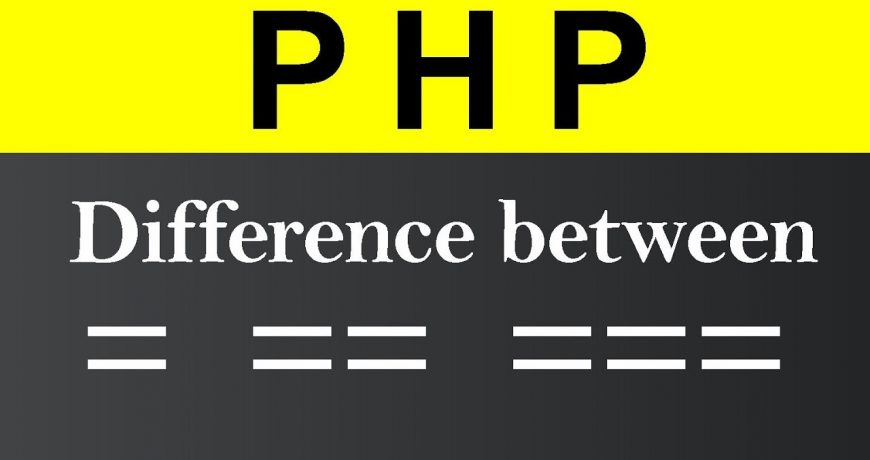When writing code in languages like PHP, JavaScript, C++, or Java, you’ll frequently encounter the =, ==, and === operators. Though they may look similar, each serves a distinct purpose in your code. Using them incorrectly can result in unexpected behavior or even bugs.
This guide explains the difference between assignment (=), comparison (==), and strict comparison (===) operators with clear examples.
= (Assignment Operator)
What It Does:
The single equal sign (=) is called the assignment operator. It assigns the value on the right-hand side to the left-hand side variable. You’re not comparing values—you’re storing them.
Syntax:
$age = 25; // $age now holds the value 25Example Use Cases:
$name = 'Ateeq Rafeeq'; // Assigning a string
$a = 10;
$b = 5;
$sum = $a + $b; // $sum becomes 15The assignment operator works with strings, numbers, booleans, and even the result of calculations or function calls.
== (Equality Operator)
What It Does:
The double equal sign (==) is used to compare two values. It returns true if the values are equal, even if they are different types.
This is known as loose comparison or non-strict comparison.
Syntax:
if ($a == $b) {
// Do something if values are equal (ignores data type)
}Example:
$myNum = '123'; // a string
$yourNum = 123; // an integer
if ($myNum == $yourNum) {
echo "They are equal."; // This will run!
}Despite being different types (string vs integer), the double equal operator converts them to the same type before comparing. This can lead to unexpected results if you’re not careful.
=== (Strict Equality Operator)
What It Does:
The triple equal sign (===) is the strict comparison operator. It returns true only if both value and data type are exactly the same.
This is useful when you want to avoid implicit type conversion and be precise about what you’re comparing.
Syntax:
if ($a === $b) {
// Do something only if value and type are equal
}Example:
$myNum = '123'; // string
$yourNum = 123; // integer
if ($myNum === $yourNum) {
echo "They are strictly equal.";
} else {
echo "Not strictly equal."; // This will run
}
$brother = 123;
if ($yourNum === $brother) {
echo "Strictly equal!"; // Same value and same type
}Strict equality is especially important when dealing with financial transactions, login validation, or user roles, where even a small mismatch in data type can break logic.
Quick Comparison: = vs == vs ===
| Operator | Function | Example | Evaluates As |
|---|---|---|---|
= | Assignment | $a = 10 | Sets $a to 10 |
== | Loose Equality | '123' == 123 | true (values match after type coercion) |
=== | Strict Equality | '123' === 123 | false (types differ) |
When Should You Use Each Operator?
- Use
=when you want to assign a value to a variable. - Use
==when you want to compare values loosely, and type doesn’t matter. - Use
===when you need to ensure both type and value are the same—this is the safest option in most scenarios.
Common Mistake to Avoid
Avoid writing:
if ($x = 10) {
// This assigns 10 to $x and always returns true!
}Instead, use:
if ($x == 10) {
// This properly compares values.
}Final Thoughts
Understanding the difference between =, ==, and === is fundamental to writing bug-free, efficient code. Whether you’re working in PHP, JavaScript, or any C-based language, knowing how to assign and compare correctly ensures your logic flows the way you intend.
If you often find yourself debugging weird behavior in if conditions or loops, check how you’re using these operators—it’s usually a simple fix with a big impact.



3 Comment(s)
Amazing my doubt is clear
Amazing my doubt is clear
Cool stuff